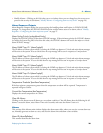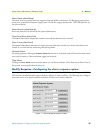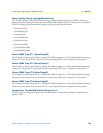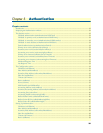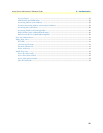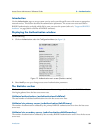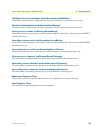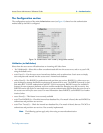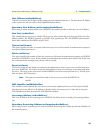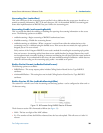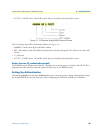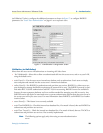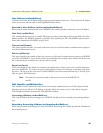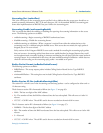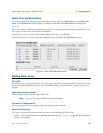
The Configuration section 34
Access Server Administrators’ Reference Guide 5 • Authentication
The Configuration section
The configuration section of the main
Authentication
screen (see figure 14) shows how the authentication
method used by the RAS is configured.
Figure 14. Authentication main screen (Configuration section)
Validation (auValidation)
Selects how the access server will authenticate an incoming call. Select from:
• No Validation(0)—Select this to allow un-authenticated calls into the access server, and on to your LAN,
using the default service.
• static Users(1)—Use the access server internal user database only to authenticate. Static users are simply
users and passwords entered into the access server’s internal users database.
• radius Users(2)—Use RADIUS to authenticate and provision user services. RADIUS is a client-server sys-
tem developed to manage the flexible requirements of remote dial-in users. The RADIUS protocol is speci-
fied under RFC 2138 for authentication and RFC 2139 for accounting. RADIUS servers are available as
freeware for most computer platforms and is an excellent method for managing user dial-in security. Any
RADIUS entries will require an associated server to process authentication requests from the access server or
the access server will reject users access. For more information about RADIUS, see RADIUS User Authen
-
tication, below.
• tacacs Users(3)—This feature is not currently available
• static Then RADIUS(4)—Check the internal user database first, if no match is found, then use RADIUS to
authenticate and provision user services.
• static Then Tacacs(5)— Check the internal user database first, if no match is found, then use TACACS to
authenticate and provision user services. Not currently implemented.
Note
The following options apply only when using an external authentication
server.



